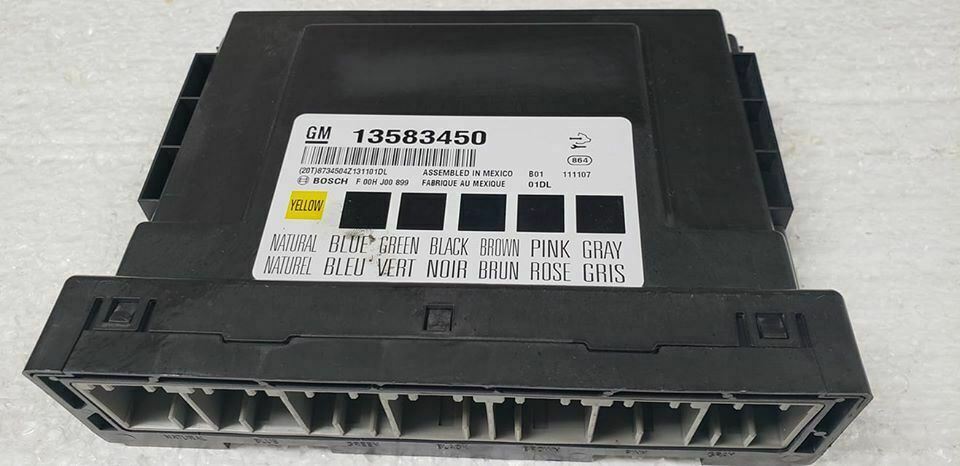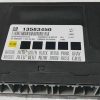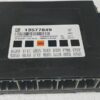Restore Your Terrain’s Electrical System with a Hassle-Free Solution
Are you chasing electrical gremlins in your 2011 GMC Terrain? Flickering lights, malfunctioning power windows, a security system that acts up, or even a frustrating no-start condition can all point to one culprit: a failing Body Control Module (BCM). As the central command center for your vehicle’s body electronics, a faulty BCM can create a cascade of confusing and intermittent problems. Stop throwing parts at the issue and get the definitive fix.
This is a complete, plug-and-play solution for your 2011 GMC Terrain BCM. We provide a fully tested replacement module that is programmed by cloning the essential data from your original unit. This process ensures seamless integration with your vehicle’s existing systems, including the VIN, mileage, and key information, saving you from a costly trip to the dealership for programming. Simply send us your original BCM, and we’ll handle the rest, shipping back a ready-to-install module promptly.
A Technician’s Notebook
I remember a 2011 Equinox—which shares its platform with the Terrain—that came into the shop with a laundry list of bizarre symptoms. The owner complained of the radio randomly shutting off, the dome lights flickering while driving, and an intermittent no-crank condition. He’d already replaced the battery and checked the alternator. After hooking up the scan tool, I saw multiple U-codes (communication errors) pointing to the BCM. Instead of a complex and expensive dealer replacement, we used a cloning service just like this one. The customer had his vehicle back the same day we received the programmed module, all problems solved. It’s the most efficient repair for these common BCM failures.
Common Signs of a Failing BCM
If your vehicle is experiencing any of the following, a faulty BCM is the likely cause. In my 20+ years of experience, these are the most frequent indicators I’ve seen in the service bay.
- ✔ Erratic or non-functional interior and exterior lights
- ✔ Power windows, door locks, or mirrors working intermittently or not at all
- ✔ The anti-theft or security system light staying on, preventing the engine from starting
- ✔ False warnings on the instrument cluster (e.g., “Service StabiliTrak,” “Service Airbag”)
- ✔ Horn, windshield wipers, or other accessories activating on their own
- ✔ Communication-related Diagnostic Trouble Codes (DTCs), especially U-codes
Your Straightforward Installation Guide
Installing your programmed 2011 GMC Terrain BCM is a direct swap. While specific steps can vary slightly, here is a general guide for the DIY enthusiast or professional mechanic.
- Safety First: Disconnect the negative terminal from your vehicle’s battery to prevent any electrical shorts.
- Locate the BCM: In the 2011 GMC Terrain, the Body Control Module is typically located on the left (driver’s) side of the dash, often behind the lower dash panel or kick panel.
- Remove Connectors: Carefully unplug the electrical connectors from the old BCM. They have locking tabs that need to be depressed to be released. Do not force them.
- Swap the Module: Unbolt or unclip the old BCM from its mounting bracket and remove it. Install the new, programmed module in its place.
- Reconnect Everything: Securely plug all electrical connectors into the new BCM. You should hear a ‘click’ as they lock in place. Reconnect the negative battery terminal.
- Test Functionality: Start the vehicle and test all body functions—lights, windows, locks, wipers, etc.—to confirm the repair was successful.
Important Post-Installation Information
In some cases, additional steps may be required after installation to ensure all vehicle systems are synchronized. Please be aware of the following:
- Airbag System Sync: If the airbag warning light is illuminated after installation, a ‘Setup SDM Primary Key in BCM’ procedure must be performed with a professional scan tool. This syncs the new BCM with the airbag system.
- Brake Pedal Position Relearn: A recalibration of the brake pedal position sensor might be necessary to ensure correct brake light operation and to clear any traction control system warnings.
Disclaimer: Always consult a factory service manual or a qualified technician for procedures specific to your vehicle.
Verified Vehicle Compatibility
This BCM service is a guaranteed solution for a wide range of GM vehicles. This module, programmed from your original, replaces part numbers 13580198, 13579004, 13582396, 13583450, 13586856, 13582688, 13586278, 13501737, 13501739, 13577924, 13580773, and 13583451. It is compatible with the following models:
BUICK LACROSSE (2011-2012)
CADILLAC SRX (2011-2012)
CHEVROLET CAMARO (2011, Convertible)
CHEVROLET CRUZE (2012)
CHEVROLET EQUINOX (2011)
CHEVROLET ORLANDO (2012)
CHEVROLET VOLT (2011, 2013)
GMC TERRAIN (2011)
BUICK REGAL (2011)
Frequently Asked Questions
How does this cloning service work?
After you place your order, we will provide instructions for shipping your original BCM to us. Once we receive it, our technicians will extract the critical vehicle data and transfer it to the replacement module. We then ship the ready-to-install BCM back to you.
Do I need to have the dealer program this module?
No. Because we clone the information from your original BCM, this module is a true plug-and-play solution. No additional programming is required, saving you hundreds of dollars in dealership fees.
What if my original part number is slightly different?
Please check the extensive list of compatible part numbers in our description. This module replaces many different BCM part numbers. If you’re still unsure, contact us with your VIN and original part number before ordering.
Is there a core charge for my old BCM?
No, there is no core charge. We only need your original module to perform the programming service. Once the data is cloned, you can keep your original part.
What tools are needed for the post-installation procedures?
The Airbag System Sync and Brake Pedal Position Relearn procedures require a professional-grade bidirectional diagnostic scan tool. Most basic code readers cannot perform these functions. If these procedures are needed, a visit to a professional mechanic may be required.


